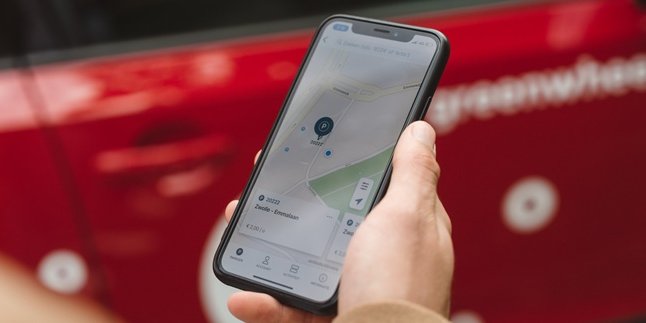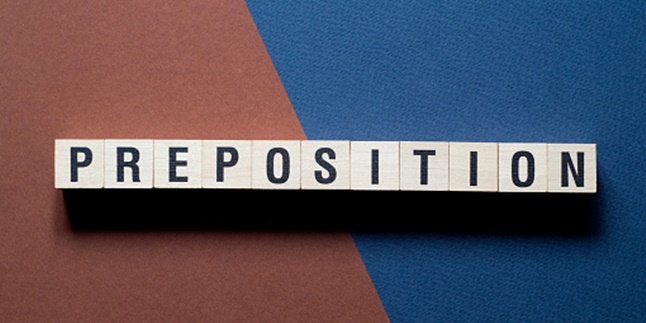Kapanlagi.com - Online stores seem to have mushroomed in everyday life. Now, buying anything seems to be possible by sitting comfortably at home. However, for the general public, they may still not be familiar with the meaning of ready stock, PO, sold out, and other terms.
These terms are usually used as labels by sellers on their products. It is normal for online store users who are not familiar with the meaning of ready. If you don't understand other terms, you are free to ask the seller.
However, if you feel hesitant, it doesn't hurt to learn common terms before making a transaction. Here is information about the meaning of ready stock, PO, sold out, and other terms commonly found in online shopping.
1. Meaning of Ready

Illustration (Credit: Unsplash)
The meaning of ready in Bahasa Indonesia is siap. Lately, the term ready is often used in online shopping activities. Usually, merchants will label "ready stock" on available products.
If a customer purchases it, the product can be shipped immediately. If there is no such label on a product, customers usually inquire about its availability using the term "ready".
In addition to online activities, there are other general meanings of ready. Ready can be considered as a term to express something that has been completed or done. This word is also often used as a call or command to runners or specific competitions as a sign that it will start soon.
2. Terms in Online Shopping

Illustration (Credit: Unsplash)
In addition to the meaning of ready, there are other terms in online shopping that you need to know. Here are some words that often appear in online buying and selling transactions.
1. PO (Pre Order)
PO stands for Pre Order, which means "order in advance" in Indonesian. If you want to buy an item, but there is a "PO" label, then you must pre-order it from the seller. It could be that the item has not been ordered from the supplier or has not been made yet.
You need to wait for a while before the item is ready and can be shipped.
2. Sold Out
Sold Out means that the item has been sold out. The displayed item photos are already sold out. Meaning, you cannot buy the item until the seller restocks.
3. Restock
Well, still related to the previous term, restock means restocking products that have run out. The product will either be made or ordered from the supplier.
4. Fix Order
Fix order means agreeing to buy. Before entering this stage, there is usually a transaction between the seller and the buyer. This transaction usually contains conversations about the specifications of the item, address, and price negotiation.
Once both parties agree, it is called a fix order. Next, the buyer will be asked to fill out the order form.
5. Order Format
The order format is the form or method of ordering determined by the buyer. The order format is created to facilitate the seller in the process of service, bookkeeping, and product delivery. Usually, buyers who have a fixed order will be asked to fill out a form.
The contents of the form include name, address, phone number, and image of the product to be purchased.
6. Keep
Keep means to store. Usually, prospective buyers will ask the seller to keep the item they want to buy by providing a down payment first. The seller will not sell the item until the buyer makes the full payment.
Usually, a system is implemented. For example, keep for a maximum of 1x24 hours or 2x24 hours, and so on, depending on the agreement. Now, if the buyer does not make the full payment immediately, the order is considered canceled.
7. Blacklist
Blacklist is a list of blacklisted individuals. This list usually contains untrustworthy sellers or buyers. People who are blacklisted will not be involved in transactions anymore. The reasons for someone to be included in this list include:
a. Sellers
- Poor service from the seller, for example: unfriendly response from the seller, late delivery of goods, late delivery of receipts.
- Seller engages in fraud, for example: goods not matching the specifications (fake goods labeled as genuine), goods not delivered, etc.
b. Buyers
- Buyers who are noncommittal, have sent the order format but did not make the transfer.
- Buyers who commit fraud by sending fake transfer evidence.
- Buyers who engage in triangular fraud, etc.
3. Types of Online Stores

Illustration (Credit: Unsplash)
Online stores are the main thing in online buying and selling transactions. In this store, you can use your knowledge about the meaning of ready stock, PO, sold out, and so on. There are various types of online stores that you usually encounter. Here are the types of online stores that you may need to know.
1. Social Media Shop
This type of online store seems to be increasingly found. This is because social media continues to be developed to provide a marketplace feature. The increasing number of social media users opens up opportunities for businesses to find their market.
Shopping on social media is indeed easier and more fun, but there are risks lurking because the security guarantee is very minimal. The transactions you make can be fraudulent. Therefore, you need to pay attention to the seller's reputation and choose a COD payment method.
2. Business-to-Consumers (B2C)
Business-to-Consumers (B2C) is the most common type of online store in society. This store is like a regular retail store that has retail products and stock storage warehouses. This store sells products directly to customers. The difference is that the transaction process is done online.
3. Shopping Mall
This type of online store can be said to be similar to general e-commerce. However, shopping malls are well-known and reputable brands that have undergone strict verification.
KLovers, that's an explanation of the meaning of ready, PO, sold out, and other terms in online shopping. There is also an explanation of several types of online stores that you may need to know.
(kpl/gen/ans)
Disclaimer: This translation from Bahasa Indonesia to English has been generated by Artificial Intelligence.















